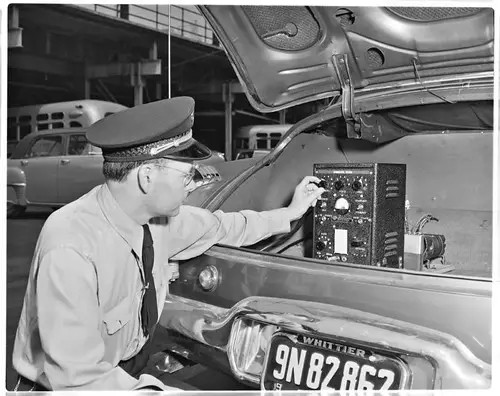Q codes are a big part of ham radio communication. They act as shortcuts for common phrases and questions. Experienced or novice operators – everyone should know these codes. The ITU (International Telecommunication Union) used them in Morse code in the early 1900s. Now, they’re used in voice communication too.
Things to keep in mind when using Q codes:
- Know the meaning and use of each code. For example, QTH means “location”, and QRZ means “who is calling?”. Being able to recognize and answer them quickly can make conversations smoother.
- Be polite. Q codes should be used only when needed. Being clear and concise helps your message get across.
Here’s an example from my experience. I was taking part in a contest where speed mattered. Suddenly, a guy asked, “QRL?” (Is this frequency in use?). Thanks to my Q code knowledge, I could immediately reply with “QRL” (Yes, it’s in use). This saved us a lot of time.
What are Ham Radio Q Codes?
Dive into the world of Ham Radio Q Codes! They are a series of shorthand codes used in amateur radio communication. They allow for efficient communication by providing a standardized way to quickly and effectively relay important information. Here’s an informative table to help you understand their meanings and usage:
| Code | Meaning | Usage |
|---|---|---|
| QRM | Artificial noise | The signal is being disrupted by human interference. |
| QRN | Atmospheric noise | The signal is affected by natural atmospheric conditions, like static or thunderstorms. |
| QRP | Low power | I’m operating with reduced power output. |
| QRZ | Who is calling? | Who is trying to contact me? |
| QSL | Acknowledgement | I confirm receipt of your message. |
Apart from the common Ham Radio Q Codes, there are lesser-known codes. For example, the QSK code is used when an operator wants to indicate their ability to receive between signals while still transmitting – a feature called “full break-in” operation.
One fantastic story shows us the value of these codes. A hiker was lost in the mountains, with no cell phone reception. They had only their ham radio as a lifeline and used the SOS code (QRT) repeatedly until someone picked up their distress signal. Search and rescue teams were dispatched quickly, leading to their safe rescue.
Ham Radio Q Codes provide concise communication in any situation. So next time you must communicate efficiently, don’t forget to use them!
Importance of Ham Radio Q Codes
Ham radio Q codes are a must in the ham radio world. They are short and standard phrases that help to communicate quickly and accurately. Used by ham operators all over, they save time and effort. Let’s look at a practical example:
- QTH: Where are you?
- QRM: Do you have interference?
- QRZ: Who’s calling?
- QRX: Wait a moment.
- QSO: Can we talk directly?
These are just a few of the Q codes used. Each one means something specific, so no long conversations are needed. Using Q codes also reduces misunderstandings. To get the most out of them, here are some tips:
- Learn the standard codes. Knowing them helps you talk on the air.
- Practice using the principles in conversations. The more you use them, the better you’ll be at it.
- Stay up-to-date with new regulations. There’s a standard set, but new ones come up.
By following these suggestions, you can make the most of Q codes. They not only speed up communication but also bring hams together. So start using Q codes and enjoy your ham radio experience!
Understanding the Q Codes
Dive in and discover the many meanings of Q Codes! Here’s a list of some commonly used ones:
| Code | Meaning |
|---|---|
| QRL | Are you busy? |
| QRZ | Who is calling me? |
| QTY | Where are you? |
| QRM | Interference? |
| QRP | Reduce power? |
| QSY | Change frequency? |
| QSL | Acknowledgement? |
| QRN | Any noise on frequency? |
| QRO | Increase power? |
The ITU (International Telegraph Union) developed these codes to make communication between operators worldwide easier. So, when you tune into a ham radio frequency, remember the Q Codes! Utilize them to ensure smooth, precise touch with other operators from different places and situations.
How to Use Ham Radio Q Codes
Q codes are a popular communication system for ham radio. Here’s a 5-step guide to use them well:
- Learn them: Know the meaning of Q codes and how they work.
- Choose the right ones: Pick the most suitable codes for your conversation or situation.
- Don’t overdo it: To avoid confusion, use Q codes sparingly.
- Speak clearly: Articulate Q codes correctly for accurate communication.
- Practice: With practice, you’ll become good at using Q codes.
Also, specific Q codes have varied meanings depending on context. This allows operators to give more info without cluttering up the airwaves.
Pro Tip: When starting a contact, use “QRZ?” instead of just your call sign. This increases your chances of getting a response.
Tips for Effective Q Code Communication
Utilizing Q codes for success in communication needs knowledge and application. Here are some tips to help you with Q code communication:
- Speak plainly and succinctly: When using Q codes, keep your language simple and to the point to avoid misunderstandings—no need for jargon or complex words.
- Learn the standard Q codes: Memorize the common Q codes to up your communication game. Make it a habit to use them in the appropriate context.
- Stay professional: When using Q codes, maintain a formal and professional tone to convey your message accurately and show respect.
Plus, for tremendous success in Q code communication:
- Adapt your style to the situation: Various contexts may require changes in your Q code communication. Understanding the context and adjusting your communication accordingly is critical to effectively transmitting information.
Remember, successful Q code communication is essential to smooth exchanges in ham radio. Follow these tips to better your Q code skills and establish more explicit connections with other operators.
Pro Tip: Improve your listening skills by observing what other operators transmit. This will help you understand their messages and answer correctly with the proper Q codes.
Conclusion
In ham radio, Q codes are a popular way to communicate quickly and effectively. They let you compress long messages into short phrases. For example, instead of saying, “Are you operating in duplex mode?” ask, “Are you operating in QSO?”. This not only saves time but also keeps messages clear.
Moreover, Q codes help bridge the gap between hams from different regions or countries. As a universal shorthand, they allow for effortless conversations, regardless of language. Also, using Q codes well shows your knowledge and commitment to the hobby.
Nonetheless, it is essential to use Q codes properly and moderately. Excessive or wrong usage can lead to confusion. To avoid this, understand the accepted guidelines and use Q codes with restraint.
Frequently Asked Questions
Q: What are Ham radio Q codes?
A: Ham radio Q codes are three-letter codes amateur radio operators use for efficient communication.
Q: How are Ham radio Q codes used?
A: Ham radio Q codes convey specific information and requests during radio conversations. They help streamline communication by providing standardized questions and answers.
Q: Are Ham radio Q codes universally accepted?
A: Ham radio Q codes are internationally recognized and accepted by amateur radio operators worldwide. They ensure clear and concise communication, especially on crowded frequencies.
Q: Can Non-amateur radio operators use ham radio Q codes?
A: While Ham radio Q codes were developed for amateur radio operators, anyone who knows these codes can use them for communication purposes. However, they are primarily used within the ham radio community.
Q: How can I learn Ham radio Q codes?
A: Learning Ham radio Q codes can be done through online resources, ham radio clubs, or by studying relevant literature. Practice and on-air experience also help in familiarizing oneself with these codes.
Q: Can I create my own Q codes for custom communication purposes?
A: While it is generally discouraged to create personal Q codes, amateur radio operators sometimes develop unofficial Q codes for specific use within their local communities. However, these custom codes may not be universally understood or recognized.



